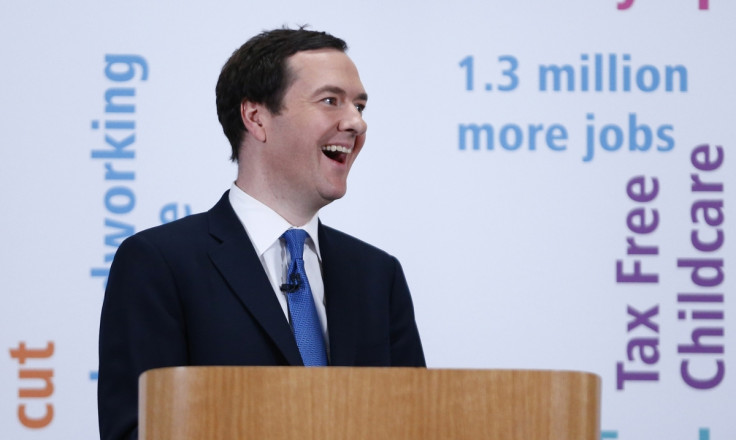UK Tax Avoidance Crackdown Inflated by Osborne's Use of 'Dodgy Statistics'

UK Chancellor George Osborne is being accused of using "dodgy statistics" in order to tell the public that the government is a lot more successful in cracking down on tax avoidance than it actually is.
Osborne and the HMRC, as first highlighted by The Independent, are using a new type of tax recovery measurement that was not used in the last election cycle, which has resulted in Whitehall claiming that the taxman has raked in £100bn (€122bn, $168bn) versus £52bn during the last government.
However, a significant accounting change means that the HMRC has added in "revenue protected figures" to the overall tax recovery number, meaning it can include a statistic that is merely a prediction of the extra tax someone may pay, after being caught, in a bid to turn a new leaf.
By using these calculations, this means that for the 2012/13 tax year, only around 40% of the HMRC's figures were "cash collected" and the majority was based on the prediction of "revenue protected".
"Osborne has been caught using smoke and mirrors to try and hide his failure to tackle tax avoidance," Shabana Mahmood, shadow exchequer secretary to the Treasury told the newspaper.
"While ordinary families are facing a cost-of-living crisis and the deficit is still high the amount of uncollected tax actually rose last year. The Chancellor should stop using dodgy statistics and finally act to make sure everyone pays their fair share."
Meanwhile, Margaret Hodge, chair of the Public Accounts Committee, said she would raise the issue at the next hearing.
"I don't think it helps anybody if the Government is failing to be transparent and honest with the figures," said Hodge to The Independent.
"Feigning success by having a false comparison with the past, or depending on predictions of success in the future, risks undermining confidence in HMRC's genuine efforts to get better at tackling tax avoidance."
The HMRC issued a statement in response to the report: "The methodology used by HMRC entirely bears out the chancellor's statement. The way we calculate our compliance yield has remained broadly the same over the last five years, and when we update the methodology we provide clear reasons for doing so. All our figures are subject to full scrutiny by both the NAO and parliamentary committees."
In February this year, Osborne and the HMRC said the net is closing on people who are evading tax by holding cash in offshore accounts, by launching a new advertising campaign.
Then, on 19 March for the Budget 2014 announcement, Osborne claimed that £4bn will flow back into the economy after he gives the HMRC more powers and a bigger budget.
However, the government's much-vaunted tax recover mission was shamed late last year by Hodge's public accounts committee, after an HM Revenue and Customs grilling flagged up a multibillion pound shortfall.
HMRC had failed to gather £2.6bn of an expected windfall from Swiss banks. However, the planned income from the Swiss accounts were written into George Osborne's budget estimates in the previous year's autumn statement.
What is the Difference Between Tax Avoidance and Tax Evasion?
Tax avoidance is the legal way of reducing one's tax bill by using a number of accounting methods to achieve this. Tax avoidance methods usually involve complicated ways in changing one's business structure through incorporation, establishing an offshore company in a tax haven, or even deducting tax for materials or equipment use. The company also fully discloses this information to the tax authorities.
Tax evasion is an illegal way of reducing one's tax bill. This involves deliberately misrepresenting or concealing the true state of their affairs to the tax authorities to reduce their tax liability, and includes, in particular, dishonest tax reporting.
© Copyright IBTimes 2025. All rights reserved.


















